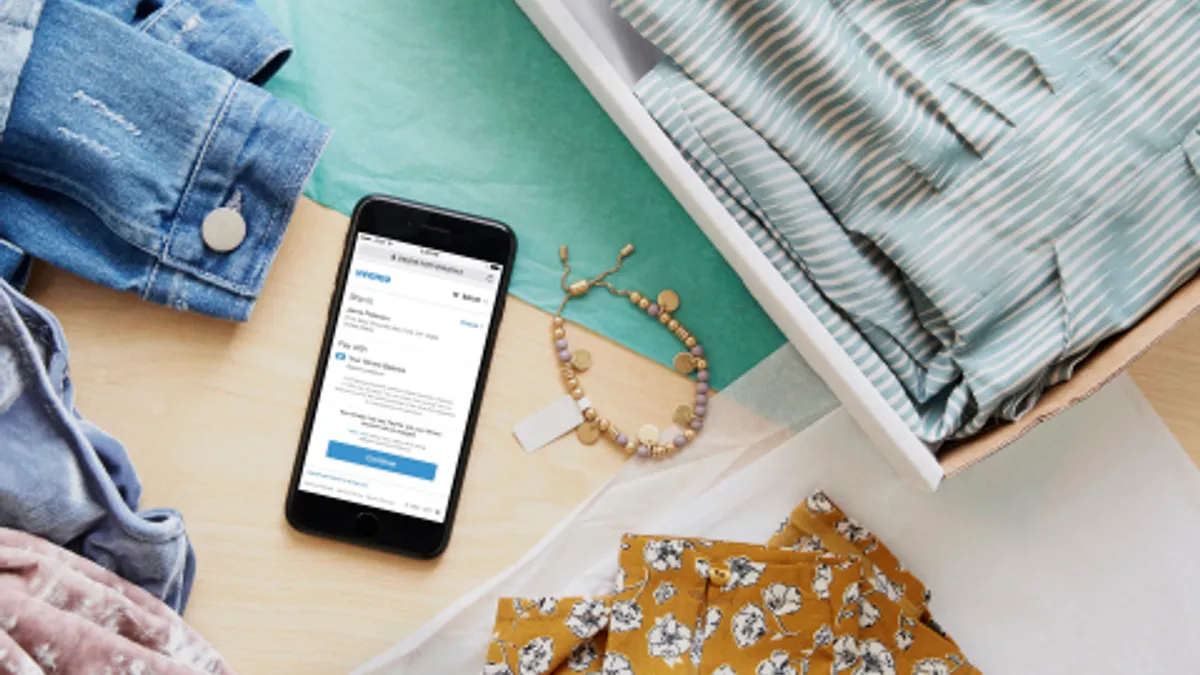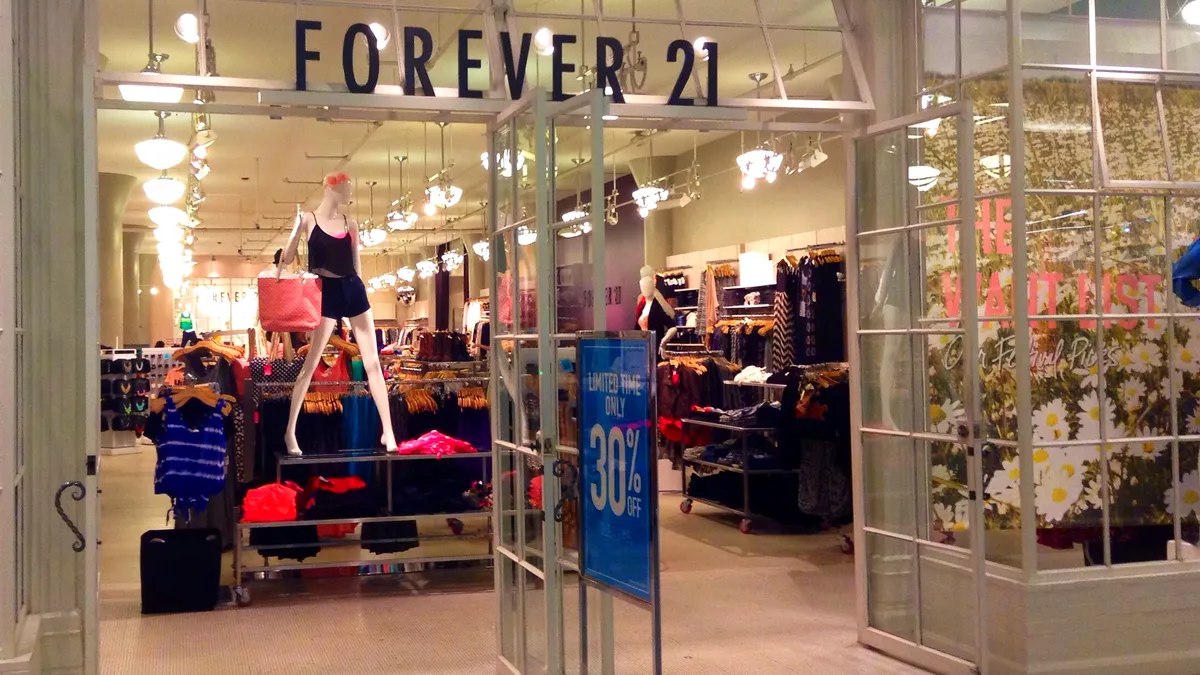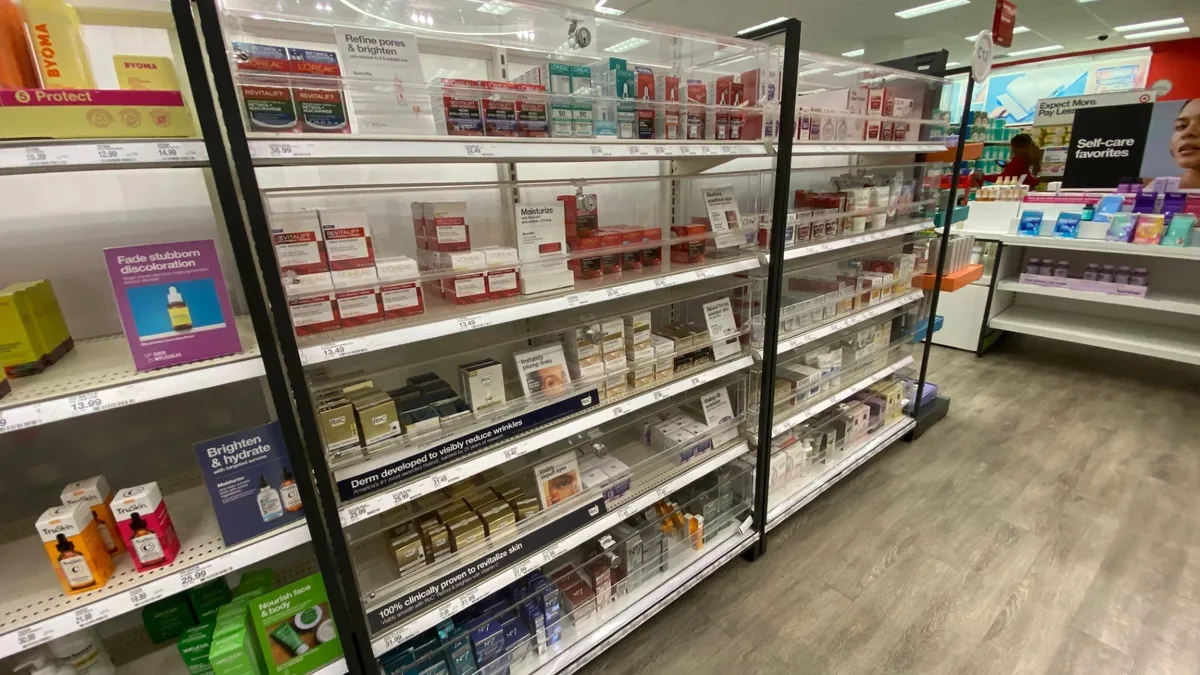Handing over a credit card has always been in the realm of the mundane. A shopper stands in line at a store, gives a cashier a card, cash, (or, for a while, a check), then takes the receipt and is out the door.
But in the midst of a retail tech revolution, nothing is routine. The process in which a retailer obtains a payment can be a part of a larger marketing strategy, can build brand loyalty and can create a frictionless experience for the consumer. If leveraged correctly, a company can broaden touchpoints with a shopper by finding creative solutions that meet their audience where they are financially.
And millennials are an intriguing audience. The U.S. Census Bureau defines the generation as born between 1982 and 2000 and, at over 83 million people, the group now represents one-quarter of the U.S. population. It's also easy to use the word "millennial" as a synonym for "kids these days," — a concept that is both inaccurate and limiting when it comes to studying their consumer behavior.
"Their scars from The Great Recession are still raw, their student loan debt is stifling and the last thing they want is even the chance of more debt."

Matt Schulz
Chief Industry Analyst, CompareCards
The demographic also has serious financial power. In the spring of 2018, omnichannel analytics firm Euclid released a report that revealed that millennials represent $200 billion in spending power and are soon projected to overtake Baby Boomers as the largest generation in the United States when it comes to purchasing.
What millennials may not have, though, is a credit card. A 2016 survey by Bankrate.com revealed that only 33% of adults aged 18 to 29 own a card.
One reason the group has dodged paying with plastic is, in part, due to the economic fallout they grew up in, specifically the impact of the 2008 recession.
"There's no question that many, many millennials have sworn off credit cards, and you can't blame them. Their scars from The Great Recession are still raw, their student loan debt is stifling and the last thing they want is even the chance of more debt," Matt Schulz, chief industry analyst at CompareCards, said in an email to Retail Dive.
Gaby Dunn, bestselling author and host of the "Bad with Money" podcast, explained that her generation is rejecting this form of payment because of what the group experienced at a young age. "I think we don't understand them or we're skeptical of them because we've seen our parents dealing with credit card debt and the economic recession in 2008 when we were impressionable and perhaps just getting our independent financial lives together," she said in an email to Retail Dive. "I personally had a partner who was ten years older than me who had $60,000 in credit card debt and that spooked me when I was 25."
The impulse to back slowly away from this payment option isn't because millennials are particular or have high maintenance spending habits: It's that they are literally scared of debt.
A survey by Credible.com had millennials rank how credit card debt fit in with fear in their daily lives. The results of the study found that millennials were more frightened of credit card debt than death.
When facing one's own mortality receives a warmer reception than credit cards, retailers need to explore creative means of reaching the demographic. What can work in a company's favor is a comprehensive look at mobile options, process transparency and a willingness to give this consumer base the tools they need to budget.
The case of Abercrombie & Fitch Co. and Venmo
Venmo is a PayPal-owned payment service that acts as a peer-to-peer digital wallet so users can receive and transfer funds via mobile app. The company slowly started working with merchants in 2016, and by the next year had the ability to integrate its capabilities with any seller that allowed PayPal.
The number of merchants accepting Venmo has exploded to over two million merchants, while monthly active users increased 185% month-over-month from August to September 2018, according to information sent by the company to Retail Dive.
The service is especially popular with millennials. A fall 2018 report by Rubiix stated that the platform was overtaking cash from ATMs as the demographic's preferred method of payment. Right behind millennials, mobile-first Gen Z is quickly pushing the concept of digital operations at a faster rate, with 68% of the group interested in person-to-person payments, according to an Accenture report. This suggests that younger generations are primed to accept a digital wallet as a primary means of working with retailers.
In order to further reach its audience, Abercrombie & Fitch launched Venmo as a payment option within its mobile app for its namesake and Hollister brands in August of 2018.
"If you think about our core customer they are digital natives. To our core customer that shopping experience between the digital and the physical is very important."

Joanne Crevoiserat
Chief Operating Officer, Abercrombie & Fitch Co.
The move was part of a larger, ongoing mission to understand and connect with the company's customer base, said Joanne Crevoiserat, chief operating officer of Abercrombie & Fitch Co. Abercrombie conducted a survey and found that 56% of its shoppers currently have a Venmo account and use it on a weekly basis.
"If you think about our core customer, they are digital natives. To our core customer that shopping experience between the digital and the physical is very important," Crevoiserat said in an interview with Retail Dive.
Additionally, at checkout shoppers have the option to choose ApplePay, PayPal or Venmo. Lauren Morr, group vice president overseeing digital and omnichannel operations of Abercombie & Fitch Co., said that a wide array of choices allows the customer to pick the methodology that best suits their needs, even if they don't own a credit card.
"This definitely gives them another option where they can connect it directly to their bank accounts. Or have Mom transfer them money as well. So it gives them another payment spending power which they might not have had previously," Morr said.
It's not about payments, it's about marketing
Another route some retailers are navigating is working with financial companies to divide up payments so consumers do not require a traditional credit card and can pay over time.
One of those services is Afterpay, an Australian company that works with brands like Urban Outfitters, Nasty Gal, Steve Madden and True Religion. Customers can buy what they want and pay with it in four, interest-free installments that are due every two weeks. If the payment is on time there are no additional fees, and if the customer is late there is an $8 penalty. The incentive to pay on time is to stay on the platform.
"When someone goes late they can't use the system again until they pay their late payment back," explained Afterpay CEO Nick Molnar in an interview with Retail Dive. It's different from a traditional credit card system because, Molnar explains, "the credit industry profits from misbehavior, not good behavior."
What Afterpay found is that consumers use the service as a way to budget while obtaining the items they need and want. "They borrow on Thursday because they get paid on the next Wednesday. And they are aligning it to their pay cycle," Molnar explained.
Swedish bank Klarna has a similar payment system that allows consumers to purchase items through installments and works with 100,000 retailers in 14 countries. Last year apparel retailer H&M invested $20 million in Klarna to provide in-store and online payment services for the fast-fashion retailer.
"The core of it is trying to remove as much friction as possible out of the buying process," Klarna's Chief Commercial Officer Michael Rouse said in an interview with Retail Dive.
And the surprising part? Retailers see it as a service and a way to lower the cost of consumer acquisition. It's ultimately a tool for marketing, Rouse explained.
Millennials aren't a monolith
Although retailers are addressing their payment game and rethinking the way they interact with younger generations, a curious thing happened this past holiday season. A study by CompareCards.com revealed that nearly 30% of all holiday shoppers applied for a credit card. Of that set of shoppers, younger millennials — ages 22 to 29 — were the largest demographic to apply for a store card.
So, how can millennials be both courting and pushing away plastic simultaneously? The answer may come down to loyalty points and budgeting.
"There's a subset of millennials who are very passionate about things like rewards points. It's difficult to paint all millennials with the same brush," said Schulz.
Those points give shoppers the opportunity to get more bang for their buck, which means a robust rewards program can tip some millennials in favor of obtaining a store card.
But, even then, retailers have to think comprehensively about mobile tech when moving forward. A spring 2018 study by Bond Brand Loyalty revealed that 85% of respondents said that their loyalty experience was improved by the ability to redeem items via mobile.
The importance of a historical framework
The notion that millennials are somehow disrupting the credit card industry by refusing to participate needs to be placed into historical context. The modern-day card came about in the early 1900s when some department stores issued their own cards in order to, "promote customer loyalty and improve service," according to CreditCards.com. Fast forward to the 1950s when the Diners Club Card was all the rage, then came the American Express Card in 1958. Bank consumer cards soon followed.
But, for many years wide swaths of the population were unable to acquire a card. Women only secured the right in 1974 when the Equal Credit Opportunity Act made it illegal for lenders to deny loans on the basis of gender. Additionally, people of color have routinely been denied entry into this part of the financial system. As recently as 2013, 47% of African-Americans and 30% of Latinos did not have access to a credit card.
"It's very myopic to talk about this subject without taking history into consideration," said Dunn. "Redlining kept black people from getting good interest rates at banks, women couldn't [obtain] credit cards without their husband's signatures until the 1970s (and unmarried women couldn't get them at all)."
So, while it may seem that retailers are in the midst of a sea change when it comes to payments, the larger picture is that many people have never had access to credit cards. Instead of a system being overthrown, payments may be in the midst of their next iteration.
In the past few months retailers have demonstrated that by expanding options to include both mobile-first solutions and creative means of allowing audiences to pay. For example, Amazon partnered with Western Union so international customers can purchase items in their local currency, Target launched in-store contactless payments and 7-Eleven introduced Apple Pay and Google Pay to all stores in the United States.
The ongoing transformation is poised to include a wider section of the population — especially diverse members of younger generations — who want the ease of a smooth technical transaction while still commanding control over their accounts and their budgets.























